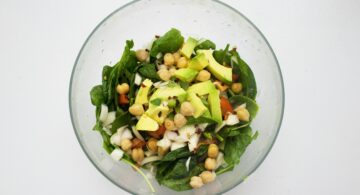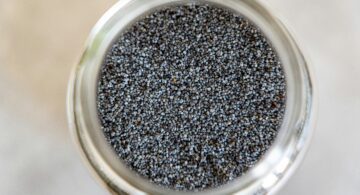Sprouting: What’s the Hype?
You see loaves of sprouted bread in the aisles, and maybe you even buy it because of its associated health benefits – but is it worth the extra cash? What are those benefits exactly?
Sprouting, the process of germinating seeds to be eaten raw or cooked, was also popular in the 1970’s. And still, to this day, many health professionals believe that sprouted benefits run the gamut from better blood sugar control to increased absorption of minerals. Read on to learn more about how sprouting can improve your health.
Why Go Sprouted?
Experts agree that sprouts are in fact more nutritious than the un-sprouted. A variety of popular brands, such as Ezekial, are based on the premise that sprouted grains are better for you. But, why?
When the seed is germinated before eating or cooking, your body is able to better absorb a number of nutrients including zinc, vitamin C, and iron. But, that’s not all. Other health benefits include:
- Better digestion: When bread is made with raw grains, the bread is starchy and hard to digest. However, sprouting allows the seed to break most of its starch down into simple sugars. This process makes these grains easier for your body to digest.
- Controlling blood sugar: According to a 2012 study published in the “International Journal of Food Sciences and Nutrition,” sulphoraphanes in broccoli sprouts were found to reduce insulin resistance, and can be beneficial in controlling blood sugar in type-2 diabetics.
- Lowers cardiovascular risk: In a recent Korean study, mice fed sprouted brown rice had higher plasma HDL-cholesterol (good cholesterol) than those who ate the non-sprouted rice.
- Increase total dietary fiber: A German study found that sprouting wheat decreases gluten proteins while increasing folate; in general, bread from sprouted wheat is higher in dietary fiber, which is essential in a healthy diet.
DIY Sprouting
The sprouting process can be used with grains, vegetables, beans and lentils. And, though you can buy a variety of sprouted products off the shelf of most grocery stores, sprouting at home allows you to experiment, while saving money on expensive sprouted products. With a simple process, you can turn your kitchen into a sprouting heaven.
- Wash your seeds and pick out any stones. You can use a colander to make this process easier.
- Move your seeds into a sealable container – this can be a jar or bowl, doesn’t matter – and cover them with water. Let this soak for 8-12 hours.
- Pour out the water, rinse with cold water and pour it out again, making sure you don’t leave the seeds sitting in any water.
- You can then leave your dry seeds in the jar or on a paper towel, and leave them where air circulation is good – near a window or an airy room.
- Wash them twice a day to keep them clean and moist. Do so until the seeds have been fully sprouted – sprouting time will vary with everything seed.
Dangers of Sprouting
While eating sprouted bread or vegetables has a slew of health benefits, there are a number of dangers, as well. Some dangers include salmonella, E. coli, and listeria. When eating and growing sprouts, the FDA suggests:
- If you buy sprouted vegetables, always refrigerate them, and try to cook them before eating.
- When making your own, use clean water and containers; sanitize your container before using it.
- All sprouts, bought or made at home, should have a clean smell. If something smells funky, throw them out.
Sprouted bread remains one of the most popular sprouted items in the grocery store, and for good reason. Sprouting your grains, (as well as veggies, lentils and rice) has huge nutritional benefits including lower cardiovascular risk, higher dietary fiber intake, better digestion and blood sugar control. Consider sprouting your own or purchasing sprouted products to reap many of these benefits.


















